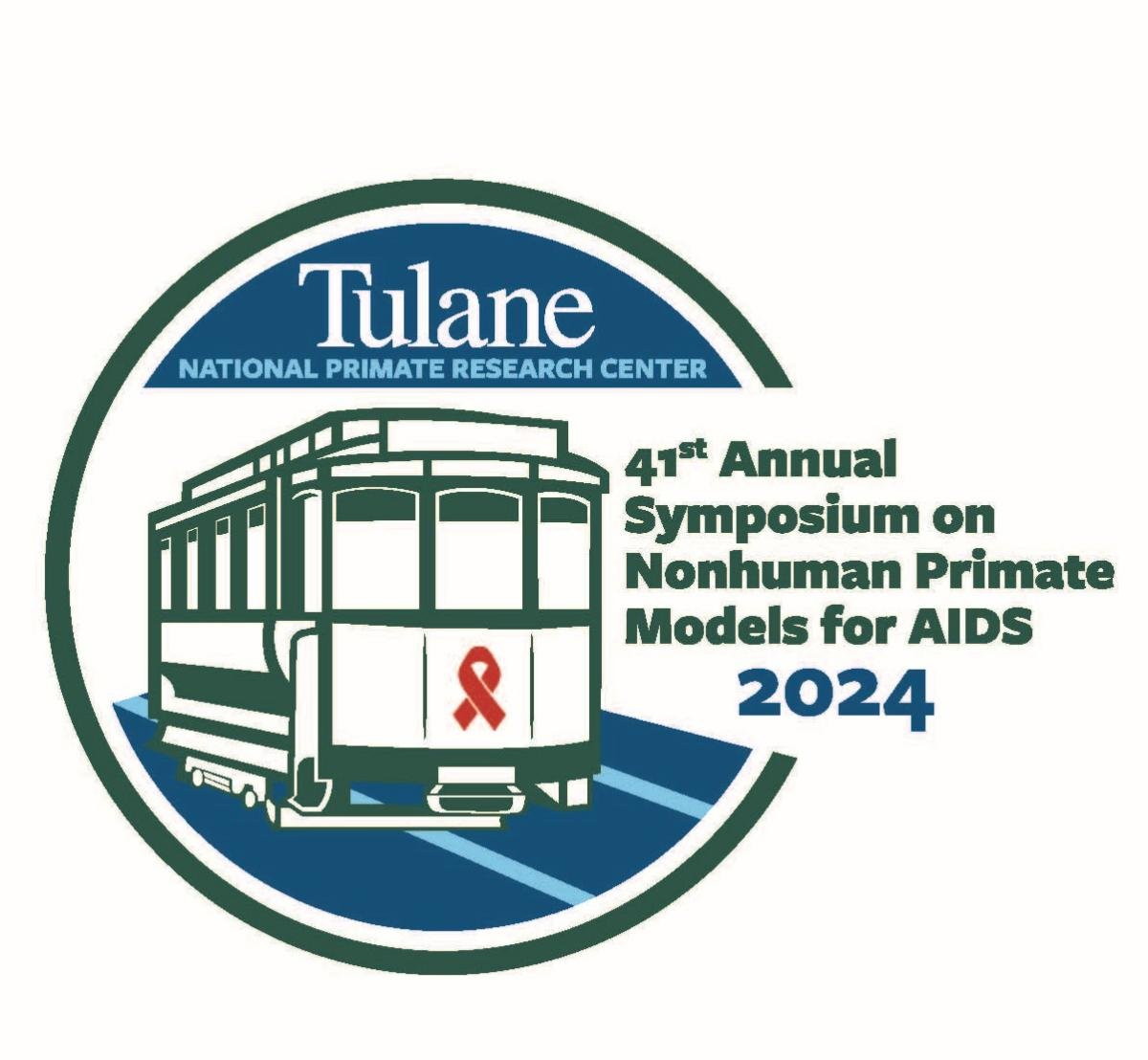11th International Workshop on HIV Persistence during Therapy
December 2024
Suva attended the 11th International Workshop on HIV Persistence during Therapy on behalf of the Bar Lab. See the links below for conference details and abstracts
Macrophage-tropic TF SHIV D infected NHP model of reservoir persistence, decay and pathogenesis on suppressive anti-retroviral therapy
S.Mallick 1,*, R. Krause 1, A. G. Mcfarland 1 , H. Schrader 1, G. D. Whitehill 1,
F. E. Marino 1, R. Podgorski 2, E. Lewis1, G.M. Shaw1, T. Burdo 2, 3, Katharine J. Bar 1
1-Perelman School of Medicine, University of Pennsylvania, Philadelphia, PA, USA;
2-Temple University, Philadelphia, PA, USA;
3-Rutgers Institute for Translational Medicine and Science, New Brunswick, NJ, USA
Joint Meeting of the Martin Delaney Collaboratories
November 2024
Suva and Dr. Bar presented at the Delaney Collaboratories meeting this year

41st Annual Symposium on Nonhuman Primate Models for AIDS
October 2024
Ryan presented an abstract on his SHIV related nonhuman primate cure research
Click here to download Ryan’s abstract
5th HIV Research for Prevention Conference (HIVR4P)
October 2024
Dr. Bar presented at the 5th HIV Research for Prevention Conference in Lima, Peru
University of Pennsylvania Department of Medicine Research Day
June 2024
Suva and Ryan presented 2 posters for the Bar Lab at the UPenn Department of Medicine Research Day
A macrophage-tropic TF SHIV model of CNS persistence and pathogenesis
Design of Simian-Human Immunodeficiency Viruses Encoding HIV-1 Recombinase Brec1 Recognition Site For Nonhuman Primate Cure Studies
2024 University of Pennsylvania Center For AIDS Research (CFAR) Scientific Symposium
Ending the HIV Epidemic: Innovation and Implementation
Click the link to learn more about CFAR
The Bar Lab had 5 posters being presented at the CFAR Symposium! A big shout out to lab members Ryan, Suva, Jake, Hunter and Noah
Hunter- “Single-cell multi-omic sequencing of in vitro HIV-1 Infection identifies integration-associated effector programs”
Ryan- “Design of simian-human immunodeficiency viruses encoded HIV-1 recombinase Brec1 recognition site for nonhuman primate cure studies”
Jake- “Replication kinetics of primary HIV isolates in monocyte-derived macrophages”
Noah- “Evaluating broadly neutralizing antibodies at ART initiation in mixed SHIV-infected Rhesus Macaques: A comparative analysis pf NGS and qPCR methods for viral tracking”
Suva- “A macrophage-tropic TF SHIV model of CNS persistence and pathogenesis”
2nd Consensus Workshop on Analytical Treatment Interruption in HIV Cure Trials
May 2024
The 2024 event was hosted in Nairobi, Kenya by the Sub Saharan African Network for TB/HIV Research Excellence (SANTHE)
Dr. Bar represented the Bar Lab and presented at the conference (see below for conference and SANTHE website links)
CROI 2024
Conference on Retroviruses and Opportunistic Infections
March 2024
Dr. Bar presented an oral presentation at CROI 2024- Please see link below to view the webcast.
Background:
BnAbs are being tested in clinical trials of treatment and cure in people with HIV (PWH) who have existing autologous neutralizing antibody (anAb) responses. To determine the relative selective pressure of bnAbs and anAbs in the BEAT2 study of 3BNC117, 10-1074, and IFNa2b, we performed a sieve analysis comparing the potency of administered bnAbs and host anAbs against reservoir and rebound Envs.
Methods:
In 8 participants of BEAT2 (NCT03588715), we sequenced provirus from PBMCs collected at study enrollment via FLIPseq or MIPseq (n= 314) to identify intact HIV-1 genomes in single and clonally-expanded populations. In 12 participants, plasma rebound envs (n=233) were sequenced by SGS at first detectable rebound viremia. Reservoir and rebound Envs were cloned and tested for neutralization sensitivity via TZM.bl assay to bnAbs and longitudinal plasma IgG (collected at a median of 8 time points over 12-24 study months). Statistical comparisons were by Wilcoxon matched-pairs test.
Results:
In all 8 participants, rebound envs aligned within reservoir phylogenies, but were not identical to any sampled reservoir viruses. Comparing rebound Envs (1 per participant) and reservoir Envs (2-6 per participant), rebound Envs were significantly more resistant to 10-1074 (IC50 6.44 µg/ml vs. 0.71 µg/ml; p=0.02), and trended towards greater resistance to 3BNC117 (ns). When tested against baseline plasma IgG (prior to bnAb dosing), rebound Envs were generally more resistant than reservoir Envs, with markedly greater resistance (30-fold difference in IC50) in the 2 participants with most delayed rebound (>12 weeks post-bnAb dosing). Potency of plasma IgG against both rebound and reservoir Envs rose significantly during bnAb dosing (mean >3-fold change in IC50 for both; p=0.001). Post-ART restart, after bnAbs had waned and anAbs had responded to recent rebound viremia, plasma IgG potency increased vs. rebound Envs (mean 2.5-fold change in IC50; p=0.001), but not reservoir Envs (ns).
Conclusions:
In the BEAT2 study of 2 bnAbs and IFNa2b, the greater potency of the administered bnAbs against reservoir vs. rebound Envs indicates bnAb selective pressure. In 2 participants with delayed rebound, baseline anAbs also exerted selective pressure. After rebound and ART restart, anAbs evolved to selectively target rebound Envs. Together, results suggest that anAbs contributed to virus suppression in a subset (25%) of studied bnAb trial participants. Approaches to boost anAbs may increase this proportion.








